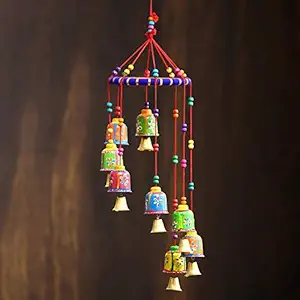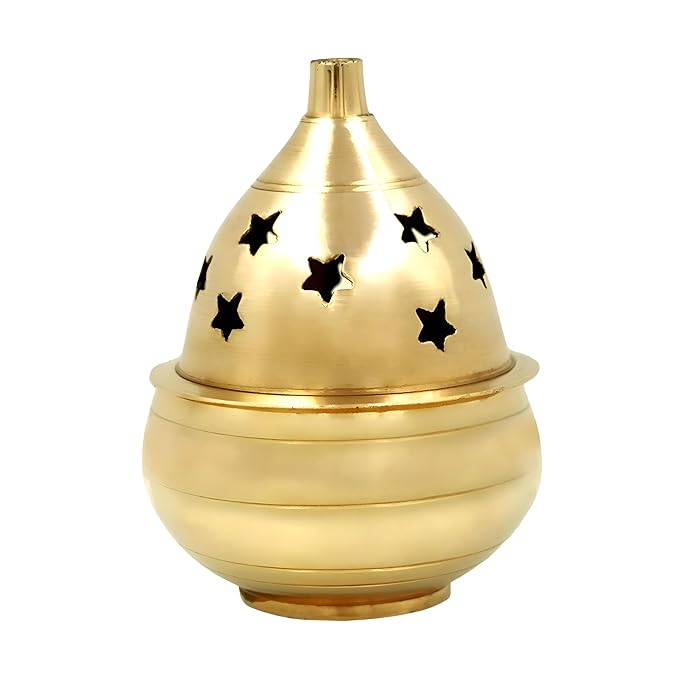श्री कृष्ण जन्मभूमि मंदिर - मथुरा
श्री कृष्ण जन्मभूमि मंदिर भारत में सबसे प्रतिष्ठित और पवित्र मंदिरों में से एक है, जो हिंदू धर्म में सबसे प्रिय देवताओं में से एक भगवान कृष्ण को समर्पित है। यह मंदिर उत्तर प्रदेश के मथुरा में स्थित है और इसे भगवान कृष्ण का जन्मस्थान माना जाता है, जिन्हें भगवान विष्णु का आठवां अवतार माना जाता है। भगवान कृष्ण के बचपन, जीवन और दिव्य कृत्यों से जुड़े दिव्य शहर के रूप में मथुरा हिंदुओं के दिलों में एक विशेष स्थान रखता है।
श्री कृष्ण जन्मभूमि मंदिर का इतिहास और महत्व
श्री कृष्ण जन्मभूमि मंदिर ठीक उसी स्थान पर स्थित है जहां माना जाता है कि भगवान कृष्ण का जन्म 5,000 साल पहले जेल की कोठरी में हुआ था। यमुना नदी के तट पर स्थित मथुरा शहर एक प्राचीन शहर है जो प्राचीन काल में भी संस्कृति, धर्म और कला का एक प्रमुख केंद्र माना जाता था।
पौराणिक उत्पत्ति:
हिंदू पौराणिक कथाओं के अनुसार, भगवान कृष्ण का जन्म यादव वंश में वासुदेव और देवकी के पुत्र के रूप में हुआ था, जिन्हें भगवान कृष्ण के मामा क्रूर राजा कंस ने कैद कर लिया था। कंस को पहले ही चेतावनी दे दी गई थी कि उसकी बहन देवकी का आठवां पुत्र उसका विनाशक होगा। इस भविष्यवाणी के डर से कंस ने अपनी बहन और उसके पति को कैद कर लिया और समय के साथ देवकी ने सात बच्चों को जन्म दिया, जिनमें से सभी को कंस ने मार डाला। हालाँकि, जब भगवान कृष्ण का जन्म हुआ, तो एक दैवीय चमत्कार ने वासुदेव को नवजात कृष्ण के साथ भागने की अनुमति दे दी। वह कृष्ण को यमुना नदी के पार गोकुल शहर ले गए, जहाँ कृष्ण का पालन-पोषण उनके पालक माता-पिता, नंद और यशोदा ने किया।
मथुरा में भगवान कृष्ण का जन्म हिंदू धर्म में एक अविश्वसनीय रूप से पवित्र घटना माना जाता है, और जिस स्थान पर उनका जन्म हुआ था वह उनकी जन्मभूमि (जन्मस्थान) के रूप में पूजनीय है।
ऐतिहासिक उत्पत्ति:
मंदिर परिसर, जो भगवान कृष्ण का जन्मस्थान है, सदियों से कई पुनर्निर्माण, नवीनीकरण और ऐतिहासिक परिवर्तन हुए हैं। माना जाता है कि मूल संरचना लगभग 6वीं शताब्दी ई.पू. की है, हालांकि समय की मार और विदेशी आक्रमणों के कारण इसकी सटीक ऐतिहासिक उत्पत्ति को इंगित करना मुश्किल है।
श्री कृष्ण जन्मभूमि मंदिर की वास्तुकला
श्री कृष्ण जन्मभूमि मंदिर परिसर भारत में सबसे अधिक देखे जाने वाले तीर्थ स्थलों में से एक है और इसमें प्राचीन और आधुनिक वास्तुकला का मिश्रण है।
1. पवित्र कक्ष (गर्भ गृह):
मंदिर का मुख्य भाग गर्भ गृह या गर्भगृह है, जहां जेल कक्ष स्थित है जहां भगवान कृष्ण का जन्म हुआ था। भक्तों का मानना है कि कृष्ण का दिव्य जन्म इसी कोठरी में हुआ था।
एक छोटा, आधुनिक मंदिर ठीक उसी स्थान को चिह्नित करता है जहां भगवान कृष्ण का जन्म हुआ था, और शिशु कृष्ण की एक मूर्ति गर्भ गृह में रखी गई है। कक्ष के आसपास का क्षेत्र बहुत पवित्र माना जाता है, और कई तीर्थयात्री प्रार्थना करने, धूप जलाने और पवित्र भजन गाने के लिए आते हैं।
2. मुख्य मंदिर संरचना:
मुख्य मंदिर संरचना पारंपरिक हिंदू मंदिर वास्तुकला और आधुनिक तत्वों का एक मिश्रण है, जो साइट के समृद्ध इतिहास और आध्यात्मिक महत्व को दर्शाती है।
शिखर (मंदिर का शिखर) ऊंचा है और पौराणिक कहानियों, दिव्य प्राणियों और भगवान कृष्ण के जीवन के विभिन्न चित्रणों, जैसे उनके बचपन के चमत्कार, गोपियों के साथ उनके चंचल स्वभाव और महाभारत में उनकी भूमिका की जटिल नक्काशी से सुसज्जित है।
मंदिर के आंतरिक भाग भी उतने ही सुंदर हैं, जिनमें भगवान कृष्ण के जीवन और दिव्य कृत्यों को दर्शाने वाले भित्ति चित्र, पेंटिंग और मूर्तियां हैं।
3. मंदिर परिसर में अन्य तीर्थस्थल:
मंदिर परिसर में भगवान कृष्ण के जीवन से संबंधित विभिन्न देवताओं को समर्पित कई छोटे मंदिर हैं, जिनमें राधा (कृष्ण की दिव्य पत्नी) और कृष्ण के जीवन की अन्य महत्वपूर्ण हस्तियों के मंदिर भी शामिल हैं।
यहाँ दीर्घाएँ और प्रार्थना कक्ष भी हैं जहाँ आगंतुक भित्ति चित्रों, चित्रों और धर्मग्रंथों के माध्यम से भगवान कृष्ण के जीवन और शिक्षाओं के बारे में जान सकते हैं।
4. यमुना नदी:
मंदिर के पास यमुना नदी बहती है, और भक्त अक्सर मंदिर में जाने से पहले नदी में पवित्र डुबकी लगाते हैं। यह नदी कृष्ण के जीवन में प्रतीकात्मक है, क्योंकि यहीं पर उन्होंने गोकुल के निवासियों को इंद्र के प्रकोप से बचाने के लिए गोवर्धन पर्वत को उठाने सहित कई चमत्कार किए थे।
भगवान कृष्ण के जन्म और प्रारंभिक जीवन की कथा
मथुरा में भगवान कृष्ण के जन्म और बचपन की कहानी भागवत पुराण और अन्य पवित्र ग्रंथों का एक केंद्रीय हिस्सा है। यहां एक संक्षिप्त अवलोकन दिया गया है:
1. कृष्ण का जन्म:
भगवान कृष्ण का जन्म राजा कंस के शासनकाल के दौरान मथुरा की एक जेल कोठरी में वासुदेव और देवकी के यहाँ हुआ था। यह भविष्यवाणी की गई थी कि कंस को उसकी बहन देवकी के आठवें पुत्र द्वारा मार दिया जाएगा, इसलिए उसने उसे कैद कर लिया और उसके प्रत्येक बच्चे को पैदा होते ही मार डाला।
जब कृष्ण का जन्म हुआ, तो एक दैवीय चमत्कार हुआ: कृष्ण के पिता, वासुदेव, उन्हें यमुना नदी के पार गोकुल ले गए, जहाँ उनका पालन-पोषण नंद और यशोदा ने किया, जबकि उनकी बहन सुभद्रा भविष्यवाणी को पूरा करने के लिए जेल की कोठरी में रहीं।
2. गोकुल में कृष्ण का बचपन:
कृष्ण ने अपना बचपन गोकुल में बिताया, जहाँ उन्होंने कई चमत्कार किए, जैसे ग्रामीणों को इंद्र के प्रकोप से बचाने के लिए गोवर्धन पर्वत को उठाना। वह गोपियों के साथ अपनी चंचल बातचीत के लिए भी प्रसिद्ध हैं, विशेषकर राधा के प्रति अपने दिव्य प्रेम के लिए।
कृष्ण का बचपन और युवावस्था दैवीय चंचलता और अच्छी की रक्षा करने और राक्षसी पूतना, नाग कालिया और अशांत राजा कंस जैसी बुरी शक्तियों को नष्ट करने के उनके प्रयासों की कहानियों से भरी हुई है।
3. कृष्ण और कंस:
जैसे-जैसे कृष्ण बड़े हुए, उन्हें अपने दिव्य उद्देश्य के बारे में पता चला और वे राजा कंस का सामना करने के लिए मथुरा लौट आए। घटनाओं के एक नाटकीय क्रम में, कृष्ण ने कंस को हराया और अपने माता-पिता को कारावास से मुक्त कराया। इससे कंस के आतंक के शासन का अंत हुआ और मथुरा में शांति बहाल हुई।
मंदिर के ऐतिहासिक और राजनीतिक परिवर्तन
श्री कृष्ण जन्मभूमि मंदिर का इतिहास कई आक्रमणों, विनाश और पुनर्निर्माणों से चिह्नित है:
1. प्राचीन एवं मध्यकालीन इतिहास:
माना जाता है कि मूल मंदिर का निर्माण छठी शताब्दी ई. में हुआ था, हालांकि ऐतिहासिक संदर्भ अलग-अलग हैं।
इस मंदिर को 11वीं शताब्दी में मुस्लिम आक्रमणकारी गजनी के महमूद ने और बाद में 17वीं शताब्दी के दौरान सम्राट औरंगजेब ने नष्ट कर दिया था। उन्होंने मूल मंदिर संरचना को नष्ट करने का आदेश दिया और उसी स्थान पर एक मस्जिद का निर्माण किया, जिसे ईदगाह मस्जिद के नाम से जाना जाता है।
2. आधुनिक पुनर्निर्माण:
विभिन्न शासकों और परोपकारियों के प्रयासों से, समय के साथ वर्तमान संरचना का पुनर्निर्माण किया गया।
18वीं शताब्दी में, मराठों ने मंदिर के जीर्णोद्धार में महत्वपूर्ण भूमिका निभाई और वर्तमान संरचना का अधिकांश हिस्सा इसी अवधि के दौरान स्थापित किया गया था।
मंदिर का पुनर्निर्माण और पुनर्स्थापना 20वीं शताब्दी में की गई थी, और आज, यह आध्यात्मिकता और भक्ति के एक भव्य स्मारक के रूप में खड़ा है, इसकी पवित्रता को संरक्षित करने और बढ़ाने के निरंतर प्रयासों के साथ।
त्यौहार एवं उत्सव
श्री कृष्ण जन्मभूमि मंदिर भगवान कृष्ण के जीवन और विरासत का जश्न मनाने का एक प्रमुख केंद्र है, विशेष रूप से कृष्ण के जन्म के प्रतीक त्योहार, जन्माष्टमी के दौरान।
1.जन्माष्टमी:
मंदिर में जन्माष्टमी सबसे महत्वपूर्ण त्योहार है। यह बड़ी श्रद्धा और उत्साह के साथ मनाया जाता है और इस अवसर को मनाने के लिए हजारों तीर्थयात्री इकट्ठा होते हैं। मंदिर को खूबसूरती से सजाया गया है, और भगवान कृष्ण के दिव्य जन्म की याद में आधी रात को प्रार्थना, गायन और नृत्य होता है।
भक्त उपवास और रात्रि जागरण करते हैं, जिसका समापन कृष्ण के जन्म के समय, आधी रात को एक विशेष आरती (पूजा) के साथ होता है।
2. राधा अष्टमी:
राधा के जन्म का जश्न मनाने वाली राधा अष्टमी, श्री कृष्ण जन्मभूमि मंदिर में भी एक महत्वपूर्ण अवसर है, क्योंकि राधा को भगवान कृष्ण की दिव्य पत्नी माना जाता है।
3. दिवाली और होली:
मंदिर में दिवाली और होली भी उत्साह के साथ मनाई जाती है, क्योंकि दोनों त्योहारों का कृष्ण के जीवन और महाभारत में उनकी भूमिका से गहरा संबंध है।
निष्कर्ष
मथुरा में श्री कृष्ण जन्मभूमि मंदिर सिर्फ एक धार्मिक स्थान नहीं है; यह भक्ति, प्रेम और दैवीय कृपा का प्रतीक है। यह एक आध्यात्मिक केंद्र के रूप में कार्य करता है जहां दुनिया भर से लाखों भक्त भगवान कृष्ण की शिक्षाओं और दिव्य कृत्यों के सार से जुड़ने के लिए आते हैं। यह मंदिर भारत के लोगों की स्थायी आस्था का प्रमाण है और राष्ट्र के आध्यात्मिक और सांस्कृतिक ताने-बाने में महत्वपूर्ण भूमिका निभाता है। चाहे कृष्ण की जन्मभूमि हो, उनके चमत्कारों की कहानियाँ हों, या राधा के प्रति उनका शाश्वत प्रेम, मथुरा और श्रीकृष्ण जन्मभूमि मंदिर भारतीय संस्कृति और धर्म के हृदय में एक अपूरणीय स्थान रखते हैं।
Overview of Sri Krishna Janmabhoomi
Location & Accessibility
Sri Krishna Janmabhoomi Temple is located in Mathura, Uttar Pradesh, and is easily accessible by road, rail, and air for pilgrims and tourists.
Historical Significance
This temple marks the birthplace of Lord Krishna and has a rich history spanning thousands of years with cultural and religious importance.
Architecture & Design
The temple showcases a blend of traditional and Mughal architectural styles, with intricately carved pillars, domes, and a sanctum sanctorum housing the deity.
Daily Rituals & Worship
Daily worship includes morning and evening aartis, bhajans, and rituals that allow devotees to participate and seek blessings.
Visiting Tips
Visitors are advised to plan visits during festivals, dress modestly, and follow temple guidelines to ensure a spiritual and safe experience.
Festivals & Celebrations
Janmashtami Celebration
Janmashtami, Lord Krishna’s birthday, is celebrated with grand aartis, devotional music, dances, and cultural programs attracting thousands of devotees.
Holi & Other Festivities
Holi, Diwali, and other Hindu festivals are celebrated with traditional rituals, color celebrations, and communal devotion.
Community Participation
Local communities actively participate in organizing festivities, distributing prasad, and welcoming pilgrims.
Special Ceremonies
Special ceremonies include abhishek of the deity, recitation of Bhagavad Gita verses, and devotional discourses.
Cultural Programs
Cultural programs include devotional songs, dances, and plays depicting Krishna's life and teachings for spiritual engagement.
Devotional Practices & Activities
Puja & Aarti Timings
The temple conducts multiple pujas and aartis daily, enabling devotees to actively participate in worship and seek Krishna’s blessings.
Special Poojas
Special poojas like Abhishek, Mangala Aarti, and festival-specific rituals are performed with grandeur to honor Lord Krishna.
Meditation & Spiritual Learning
The temple offers spaces for meditation, listening to spiritual discourses, and learning about Krishna's teachings to enrich devotees' spiritual journey.
Seva & Volunteering
Devotees can participate in temple seva activities such as cleaning, guiding pilgrims, distributing prasad, and assisting in temple functions.
Temple Guidelines
Visitors are encouraged to maintain decorum, respect rituals, follow dress codes, and participate in devotion mindfully.
Temple Significance & Beliefs
Spiritual Importance
Sri Krishna Janmabhoomi is considered highly sacred, where devotees seek blessings for prosperity, peace, and spiritual fulfillment.
Legends & History
The temple is steeped in legends of Lord Krishna’s birth and divine activities, inspiring devotion and pilgrimage for centuries.
Faith & Devotion
Devotees' faith is strengthened through regular worship, participation in rituals, and celebration of festivals, promoting spiritual growth.
Blessings & Prayers
Visitors pray for health, prosperity, and guidance in life, believing in the divine presence of Lord Krishna at this sacred site.
Preservation of Heritage
The temple preserves cultural and religious heritage, maintaining traditions, architecture, and community engagement in Mathura.
Visiting & Tourism Information
Best Time to Visit
The temple is best visited during Janmashtami and winter months for a vibrant festival experience and comfortable weather.
Nearby Attractions
Nearby attractions include Dwarkadhish Temple, Vishram Ghat, and other Mathura pilgrimage sites for a complete spiritual journey.
Accommodation Options
Various hotels, guesthouses, and dharamshalas are available near the temple for devotees and tourists.
Local Cuisine & Facilities
Visitors can enjoy local Mathura sweets, vegetarian cuisine, and access facilities like rest areas and clean drinking water.
Travel Tips
Plan visits ahead, respect local customs, dress modestly, and participate in temple rituals mindfully for a spiritual experience.
Sri Krishna Janmabhoomi Temple is located in Mathura, Uttar Pradesh, and is easily accessible by road, rail, and air for pilgrims and tourists.
This temple marks the birthplace of Lord Krishna and has a rich history spanning thousands of years with cultural and religious importance.
The temple showcases a blend of traditional and Mughal architectural styles, with intricately carved pillars, domes, and a sanctum sanctorum housing the deity.
Daily worship includes morning and evening aartis, bhajans, and rituals that allow devotees to participate and seek blessings.
Visitors are advised to plan visits during festivals, dress modestly, and follow temple guidelines to ensure a spiritual and safe experience.
Janmashtami, Lord Krishna’s birthday, is celebrated with grand aartis, devotional music, dances, and cultural programs attracting thousands of devotees.
Holi, Diwali, and other Hindu festivals are celebrated with traditional rituals, color celebrations, and communal devotion.
Local communities actively participate in organizing festivities, distributing prasad, and welcoming pilgrims.
Special ceremonies include abhishek of the deity, recitation of Bhagavad Gita verses, and devotional discourses.
Cultural programs include devotional songs, dances, and plays depicting Krishna's life and teachings for spiritual engagement.
The temple conducts multiple pujas and aartis daily, enabling devotees to actively participate in worship and seek Krishna’s blessings.
Special poojas like Abhishek, Mangala Aarti, and festival-specific rituals are performed with grandeur to honor Lord Krishna.
The temple offers spaces for meditation, listening to spiritual discourses, and learning about Krishna's teachings to enrich devotees' spiritual journey.
Devotees can participate in temple seva activities such as cleaning, guiding pilgrims, distributing prasad, and assisting in temple functions.
Visitors are encouraged to maintain decorum, respect rituals, follow dress codes, and participate in devotion mindfully.
Sri Krishna Janmabhoomi is considered highly sacred, where devotees seek blessings for prosperity, peace, and spiritual fulfillment.
The temple is steeped in legends of Lord Krishna’s birth and divine activities, inspiring devotion and pilgrimage for centuries.
Devotees' faith is strengthened through regular worship, participation in rituals, and celebration of festivals, promoting spiritual growth.
Visitors pray for health, prosperity, and guidance in life, believing in the divine presence of Lord Krishna at this sacred site.
The temple preserves cultural and religious heritage, maintaining traditions, architecture, and community engagement in Mathura.
The temple is best visited during Janmashtami and winter months for a vibrant festival experience and comfortable weather.
Nearby attractions include Dwarkadhish Temple, Vishram Ghat, and other Mathura pilgrimage sites for a complete spiritual journey.
Various hotels, guesthouses, and dharamshalas are available near the temple for devotees and tourists.
Visitors can enjoy local Mathura sweets, vegetarian cuisine, and access facilities like rest areas and clean drinking water.
Plan visits ahead, respect local customs, dress modestly, and participate in temple rituals mindfully for a spiritual experience.


